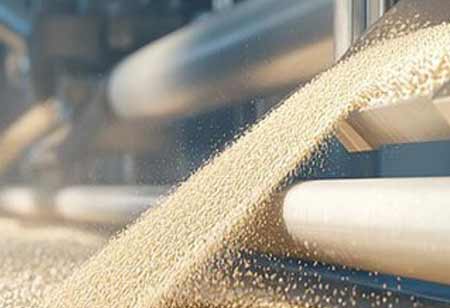Thank you for Subscribing to Agri Business Review Weekly Brief
Technology Reshaping Grain Handling And Storage

By
Agri Business Review | Monday, March 10, 2025
Stay ahead of the industry with exclusive feature stories on the top companies, expert insights and the latest news delivered straight to your inbox. Subscribe today.
Advancements in technology are transforming grain handling and storage by addressing key challenges such as spoilage, inefficiency, and labor intensity, while also improving productivity and sustainability. The integration of innovative tools and systems ensures that grains are handled accurately, stored securely, and maintained under optimal conditions, benefiting farmers, storage operators, and the wider agricultural supply chain. One of the most significant technological innovations in grain handling is automation. Automated conveyors, elevators, and augers have also largely replaced manual labor in many facilities, drastically speeding up the process of moving grains from farms to storage.
AI and Data Analytics Optimize Storage and Handling
Automation enables operators to maintain better control over grain flow, ensuring smooth operations during peak harvest seasons. Grain quality often depends on how well it is harvested and prepared for storage. The data allows farmers to make informed decisions about when to harvest and how to prepare grains for storage, minimizing losses caused by premature or delayed harvesting. It prevents losses and ensures that stored grain meets quality standards for sale or processing. Smart sensors in grain storage facilities have transformed how grain conditions are monitored.
Ventilation and aeration technologies have also seen significant advancements, helping to maintain ideal storage conditions. Modern aeration systems have automated controls that adjust airflow based on real-time environmental conditions. By maintaining optimal temperatures and reducing moisture levels, these systems prevent hotspots and spoilage, ensuring long-term grain preservation. Advanced ventilation systems also enhance energy efficiency, reducing the costs of maintaining storage conditions. Grain handling and storage operations benefit from applying artificial intelligence (AI) and data analytics.
AI-powered platforms analyze historical and real-time data to predict storage risks and recommend preventive measures. For instance, algorithms can forecast weather conditions and suggest adjustments to storage practices, such as increasing aeration during humid periods. Similarly, data analytics can help operators optimize grain movement schedules, ensuring that grains are transported and processed without unnecessary delays. Blockchain technology is another innovation that improves grain handling and storage by enhancing traceability and transparency
Blockchain Ensures Traceability and Transparency
Blockchain ensures stakeholders can verify the grain's origin, quality, and handling practices. It builds trust among buyers and enables compliance with regulatory standards and certifications. Robotics is making a significant impact. Robotic systems are now used to inspect storage facilities, detect structural issues, and ensure cleanliness. Automated pest control systems, such as drones with infrared cameras, can identify and address pest infestations before they cause significant damage.
Solar-powered grain dryers and energy-efficient equipment reduce the carbon footprint of storage operations. Technologies that minimize grain losses reduce waste and ensure more harvested crops reach the market or processing facilities. Technology transforms grain handling and storage by improving efficiency, reducing losses, and ensuring grain quality. From automation and smart sensors to AI and blockchain, these innovations address the challenges of traditional methods while aligning the industry with modern demands for sustainability and transparency.





